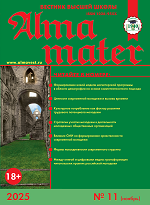Attempt is made to re-think both place and role of “Myth about Pygmalion” in mathematical education from view of it’s considering as historical and philosophical phenomenon in the context of discursive practices of philosophy of education. Substantiated is an assumption about importance and actuality of mythologems in overcoming modern crisis in universal mathematical education.
Key words: Myth about Pygmalion, syndrome of Pygmalion, effect of Pygmalion, lecturing in mathematics, philosophy of education.
References
1. Savelova, E.V. Philosophy of education and philosophy of myth: in search of a dialogue // Problems of culturology. — 2008. — No. 12. — P. 33–35.
2. Chelyshev, P.V. Person in ancient mythology: nature of the hero and personal choice of destiny // Vestnik of N.A. Nekrasov Kostroma state university. — 2014. — No. 4. — P. 213–216.
3. Kharipbayev, B.I. Once again about myth // Actual problems of humanitarian and natural sciences. — 2011. — No. 4. — P. 136–140.
4. Talanov, V. Syndrome of Pygmalion and education // Alma mater (Vestnik vysshei shkoly). — 2008. — No. 5. — P. 22–28.
5. Aronov, R.A. Mystery of Newton & education // Problems of philosophy. — 2007. — No. 7. — P. 63–69.
6. Livingstone, J.S. “Pygmalion effect” in the sphere of management // Management of personnel. — M., 2006. — P. 55–81.
7. Khatunina, I.V. “Pygmalion effect” in management: a research in labor migration and behavior stereotypes as to adoption of decisions // Vestnik of Omsk university. Ser. “Economics”. — 2008. — No. 2. — P. 57–61.
8. Erovenko-Ritter, V. Phenomena of Pygmalion in sociology of modern language of mathematics // Alma mater (Vestnik vysshei shkoly). — 2002. — No. 6. — P. 26–31.
9. Khenispaev, Zh.K. Pygmalion and Galatea: consciousness and the World // World of science, culture, education. — 2009. — No. 2. — P. 125–127.











.png)






